22 Feb End of Discrimination vs Gender Equality and Women Empowerment in India
Source – The Hindu and PIB.
General Studies – Indian Polity and Governance, Social Justice, Women Empowerment, Women’s Labor Participation, Armed Forces Tribunal, Permanent Commission of Women in Armed Forces, Manpower Periodic Data (October-December 2023)
Why in the News?
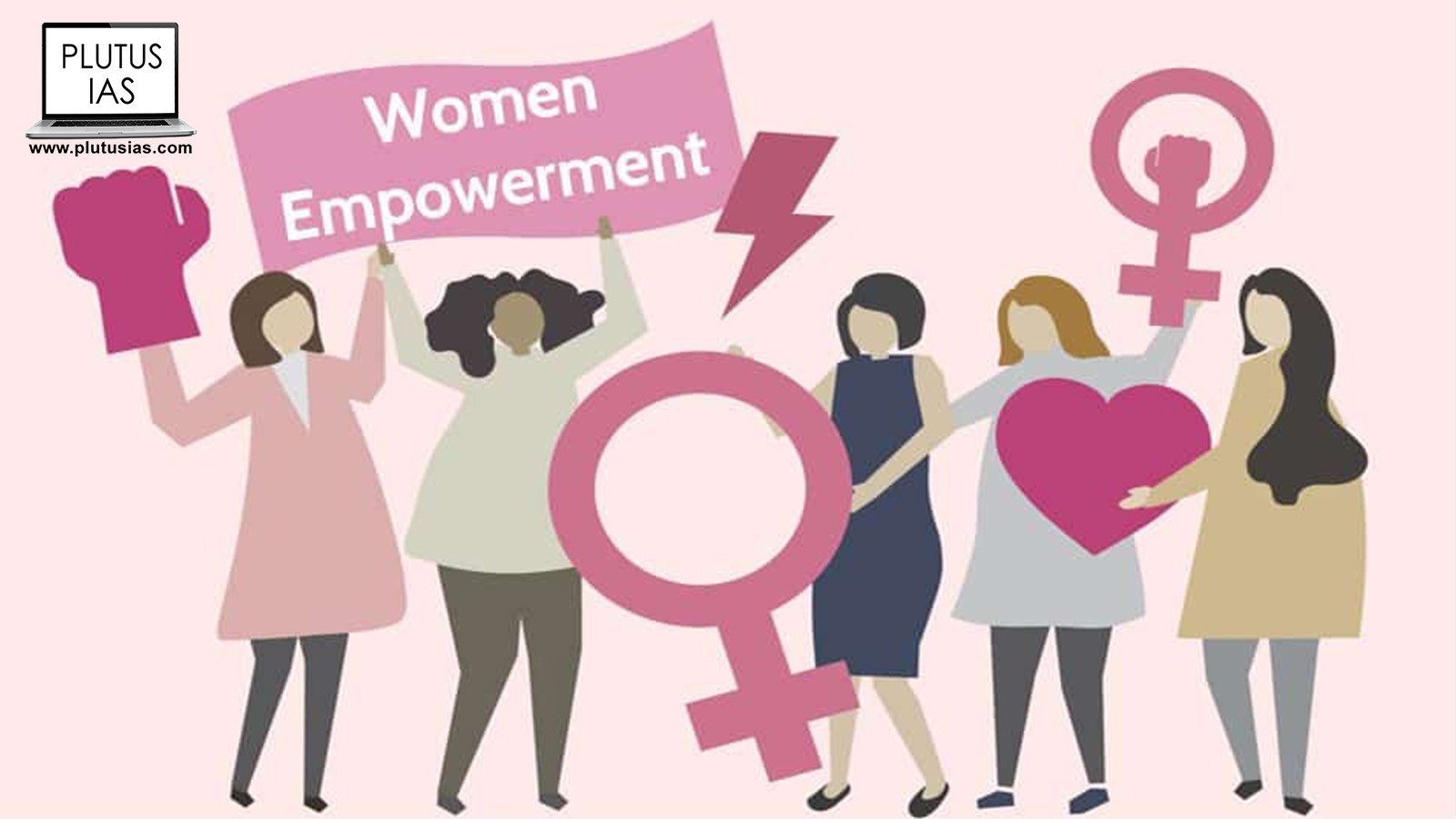
- Recently, the Supreme Court of India in the case “Union of India and Others vs. Former Lieutenant Selina John” has taken a strong stand against the patriarchal mentality and archaic idea and has ruled that the rules punishing female employees for getting married are unconstitutional. .
- The Supreme Court of India, while giving its judgment in this case, remarked that –“Termination of a woman’s employment because she gets married is a serious case of discrimination and inequality. “Acceptance of such patriarchal norms undermines human dignity and the right to non-discriminatory and fair treatment by the State.”
- The Supreme Court has upheld the rights of Selina John, a former Lieutenant and Permanent Commissioner of the Military Nursing Service of the Indian Army. Celina was dismissed from service in 1988 because she got married.
- A bench headed by Justice Sanjiv Khanna directed the Central government to pay Rs 60 lakh as compensation to Ms John within eight weeks.
- The government had appealed in the apex court against a decision of the Lucknow bench of the Armed Forces Tribunal.
- The tribunal bench had ruled in favor of Celina in 2016. Pointing out that her dismissal was “wrongful and illegal”, the court said the rule against marriage was applicable only to female nursing officers.
- Women in India have been fighting a long and hard battle for gender equality in the military.
- Women in India were granted permanent commission to women in the Indian Army and Armed Forces in 2020 and 2021 following the decisions given by the Supreme Court.
- The Supreme Court said that –“The armed forces in India need to translate into action the statement that the Indian Army is encouraging more and more women to join the force.”
- The situation for women in India is not much better even in the civilian sector and women are often asked uncomfortable personal questions during job interviews. They are also questioned about future plans related to marriage and motherhood.
- Labor force participation of women in the labor force – According to the latest periodic labor force data (October-December 2023), the participation of women of all ages in India is only 19.9 percent.
- Even today in India, girls in rural areas, especially from poorer sections, have to leave school due to various reasons ranging from financial to lack of proper toilets.
- In terms of gender equality, the UN Gender Snapshot Report 2023 states that unless reform measures are taken from a gender equality perspective, future generations of women will continue to spend a disproportionate amount of time on household chores and duties compared to men and Will stay away from leadership roles.
- Overall Gender Gap: According to the Gender Gap Report, 2023 – India ranks 127th out of 146 countries in terms of gender equality.
Meaning of gender equality:
- Gender equality means that men and women or boys and girls should have equal rights, responsibilities and equal opportunities. It is not just a social issue, but it is also a human right that provides all individuals with the right to live with a sense of prosperity and dignity through equality.
- According to UN Women – Gender equality does not mean that women and men are equal, but it means that they should have equal rights, freedoms, and opportunities based on their capabilities and choices. Its objective is to increase social awareness against gender discrimination, violence against women, and other gender problems and to establish a sense of equality in the society.
- It also includes that the achievement of gender equality is essential for a well-educated and well-governed society, where all individuals have equal rights and opportunities based on their willingness and ability. This brings harmony and prosperity in the society which helps in the direction of prosperity and progress. Gender equality is not only an ideal but also the cornerstone of a prosperous and prosperous society.
Meaning of women empowerment:
- The objective of women empowerment is to empower women at social, economic, political, and personal levels. The purpose of this process is to provide women with the right to freedom and equality in all spheres of their lives.
Major components of women empowerment:
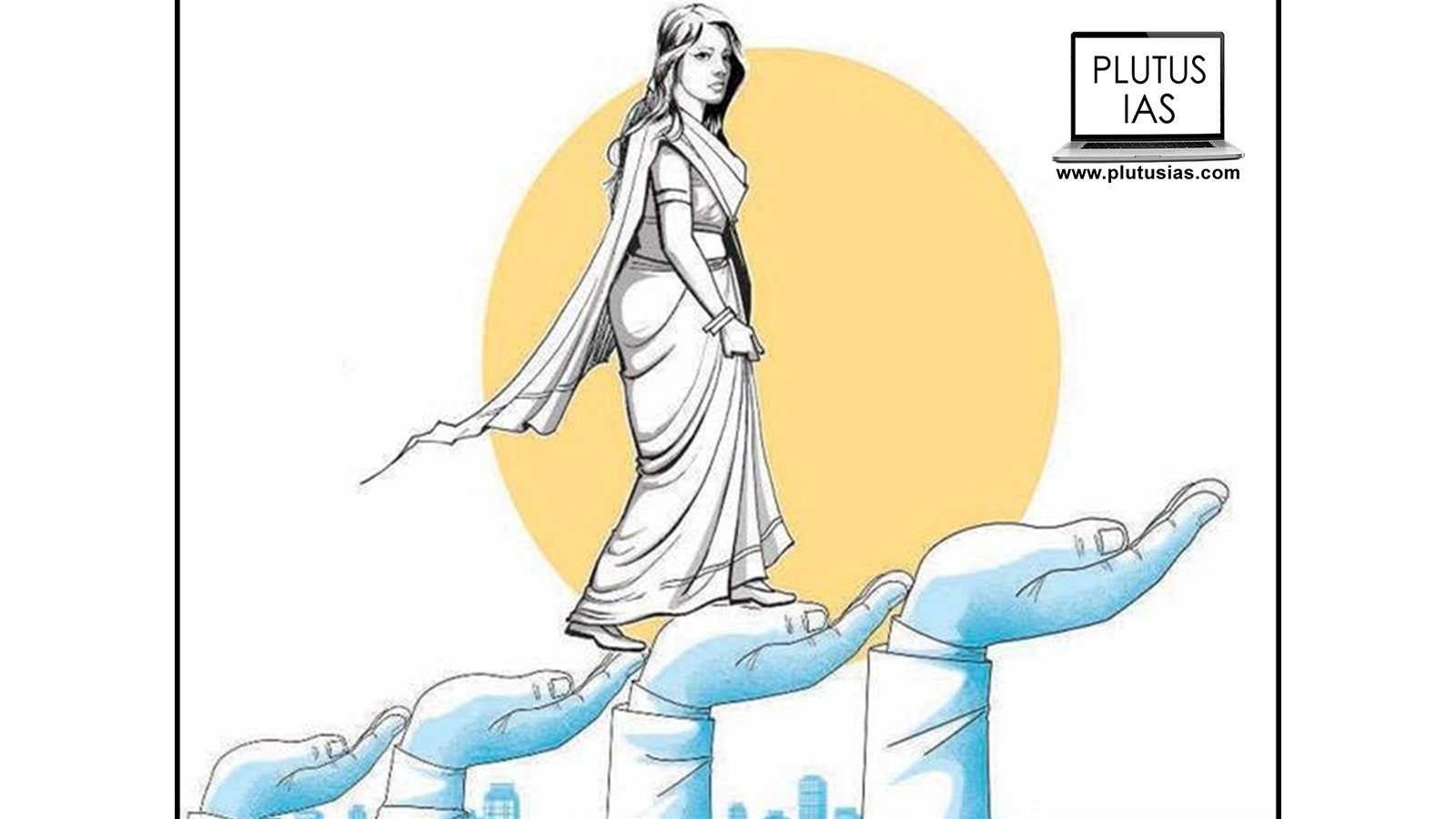
Following are the main five components of women empowerment –
- self respect :It is very important for women to have a sense of self-respect. Through this, they recognize their capabilities and abilities and by knowing the right to equality in the society, they remain conscious of their rights.
- Right to choose options and take decisions: Women should have the right to make free choices and decisions in their lives, be it at home or in the workplace, women should have the right to make free choices and decisions everywhere and in every situation in their lives. There should be a right to take.
- Access to opportunities and resources::Women must have access to education, employment, healthcare, and other resources so that they can truly develop their capabilities.
- Women have the right to control their lives:Women should be positively involved in the decisions of their lives, whether inside or outside the home. Women should have the right to freely control their lives everywhere and in every situation.
- Ability to participate in social change at national and international level: Women must be empowered to actively plan and participate in equitable transformation of the social and economic system.
Following are the three main dimensions of women empowerment –
- Socio-cultural empowerment: To provide women with the ability to express their views freely and participate in social change.The main dimension of empowerment is।
- economic empowerment :Making women economically independent and providing them the ability to actively participate in economic development is a major dimension of women empowerment.
- Political empowerment: Making women understand their increasing role in participating in political processes, increasing participation in policies, and representation is also a major dimension of women empowerment.
All these dimensions together indicate the process of making women capable, independent, and equal as human beings.
Relationship between gender equality and women empowerment:
- The relationship between women empowerment and gender equality is a deep and reciprocal relationship and it is important to understand the interrelationship of the two. To achieve gender equality, women must have equal rights, opportunities, and equal status in society. Women empowerment also means that women have control over their lives, express their opinions, and are empowered in various areas of life.
- In Indian society, women have had the privilege of worshiping goddesses since ancient-medieval times, but with time there were many obstacles for women to reach higher positions in the society. Despite this, many powerful women leaders and politicians have also emerged in Indian history, who have not only made significant contributions in their fields but have also caused change in the society.
- In India, from the ancient-medieval period to the pre-independence period, women have been worshiped through special religious and cultural titles, but they have not enjoyed full equality in society. The society changed through many reforms like Women’s Welfare Movement, Sati Abolition Act, Widow Remarriage Act, Child Marriage Restraint Act.
- The socio-religious reform movement (19th century) also took many steps towards women empowerment. Religious reforms against the practice of Sati, the passage of laws such as the Widow Remarriage Act, and the Child Marriage Restraint Act led to social change and women gained more rights.
- In pre-independence India, socio-religious reform movements brought positive changes in terms of women empowerment. Besides, women’s organizations also raised their voice on the issue of gender equality and spread awareness in the society.
- During the independence movement, Mahatma Gandhi gave women a leading role in bringing about positive changes in the society. She inspired women to participate in the freedom struggle and made them courageous to demand their rights in the political and social sphere.Even in the freedom struggle led by Gandhiji, women remained conscious of their contribution and got a chance to play a bigger role in the society.
- After independence, the Indian Women’s Council, Indian Women’s Association, and other women’s organizations have been struggling for gender equality and women’s empowerment in India. These organizations have inspired women to fight for their rights and bring positive changes in their lives.
- Thus, the struggle for women empowerment and gender equality is going on simultaneously and it is progressing towards equality and justice in the society. To promote this, it is important to positively support the society and encourage gender equality.
- In the present time, support towards women empowerment and gender equality is increasing rapidly and everyone should get the right to equality in the society. It is necessary for all of us to support this path forward through improvements in education, employment, health, and social harmony.
In post-independence India, there was a renewal of women’s empowerment and gender equality movements during the peace period. This happened mainly due to the following reasons –
After independence most of the women workers became involved in nation building work:After independence, many women became more active in public life and played roles in politics, education, and other fields.
The trauma of the partition of India diverted attention from contemporary women’s issues:Due to divisions in India’s traditional society, women’s issues were not the focus. After independence, this situation changed and women’s issues started being discussed.
After the 1970s, there was a renewal of women’s empowerment and gender equality movements in India.
Known as the second phase of the Indian women’s movement, major women’s organizations launched several important initiatives to promote gender equality and women’s empowerment. As –
Self-Employed Women’s Association (SEWA): This organization worked to improve the condition of women working in the unorganized sector and provided them support for self-employment.
Annapurna Mahila Mandal (AMM):This organization worked for the welfare of women and girls and provided them support in education, health, and other areas.
Current status and challenges of women in India:
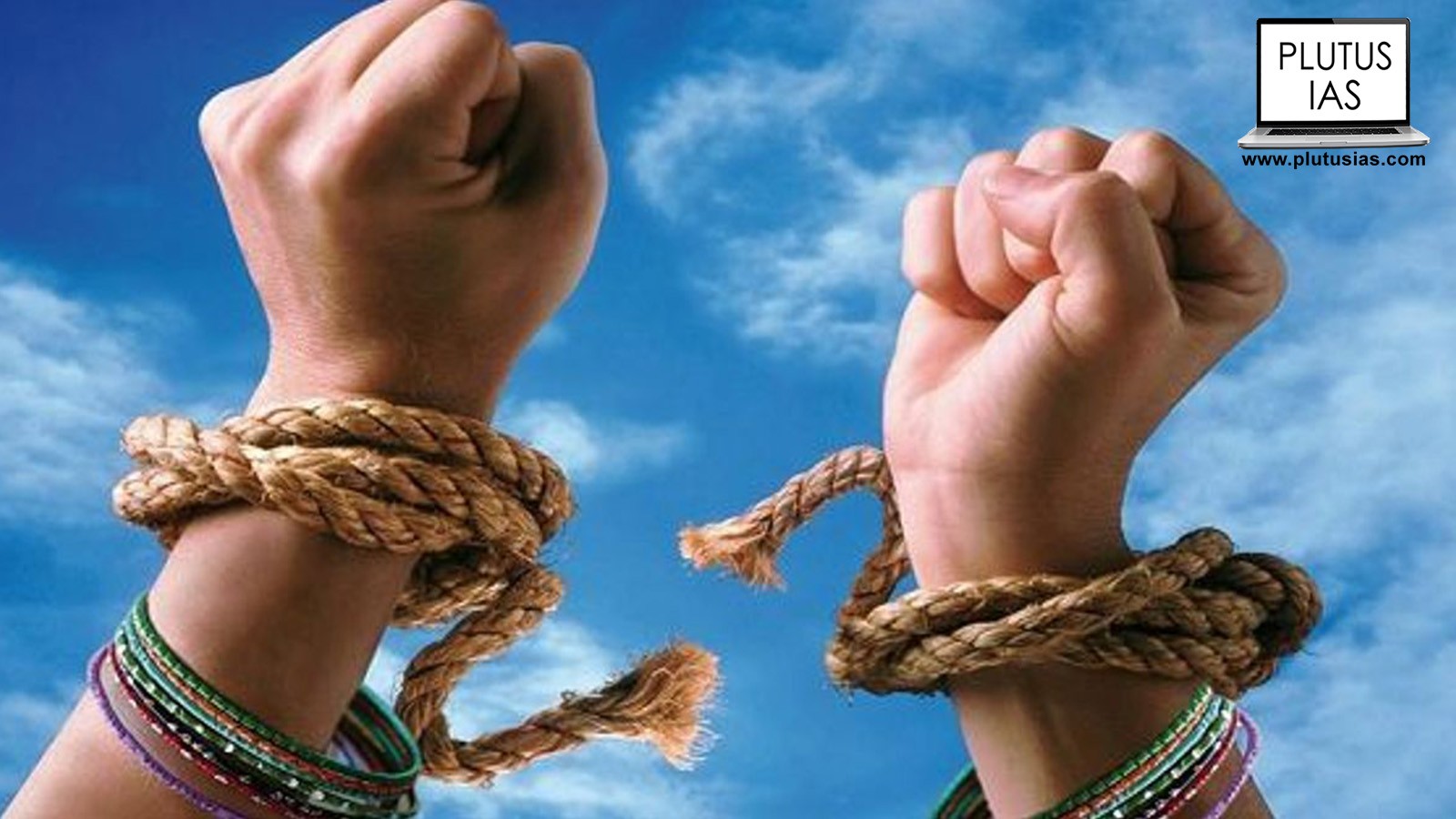
Recently, the government has launched several schemes to promote gender equality and women empowerment. Although there has been some improvement, there are still many challenges in providing equal opportunities to women in India and discrimination against them continues.
The government has launched several new initiatives to empower women in various fields, such as entrepreneurship support, education, health services and social status.
The objective of these efforts is to provide equality, freedom, and protection of rights to women in the society. Although these problems still exist, steps are being taken towards positive efforts and change.
The current situation of women in India is a complex mix that includes both prosperity and challenges. Here are some key aspects to look at:
- Gender inequality: Due to old cultural trends and caste system in India, problems of gender inequality still exist. Sex ratio, maternal mortality rate, and inequality in education are the main evidence of this.
- Socio-cultural inequality: As a result of social and cultural norms of Indian society, women are often deprived of various opportunities. Child marriage and unequal male rights are also examples of this.
- Economic inequality:Women’s pay gap, informal employment, and under-representation in the highest positions exacerbate this.
- Political inequality:At the social and political level, women are under-represented. The lack of women members in Parliament and state assemblies challenges this.
- Gender based violence: The commonness of gender-based violence against women makes it a serious problem.
- Education : The best and most important way for the progress and better future of any society is education, but even in this, women have not yet got equal opportunity in many areas. Facing these problems, there is a need for policies and steps to enable empowerment of women at literacy, health, employment, and political levels in the society. People should promote gender equality and mutual harmony so that every person gets equal opportunities and can move towards prosperity.
Importance of gender equality and women empowerment:
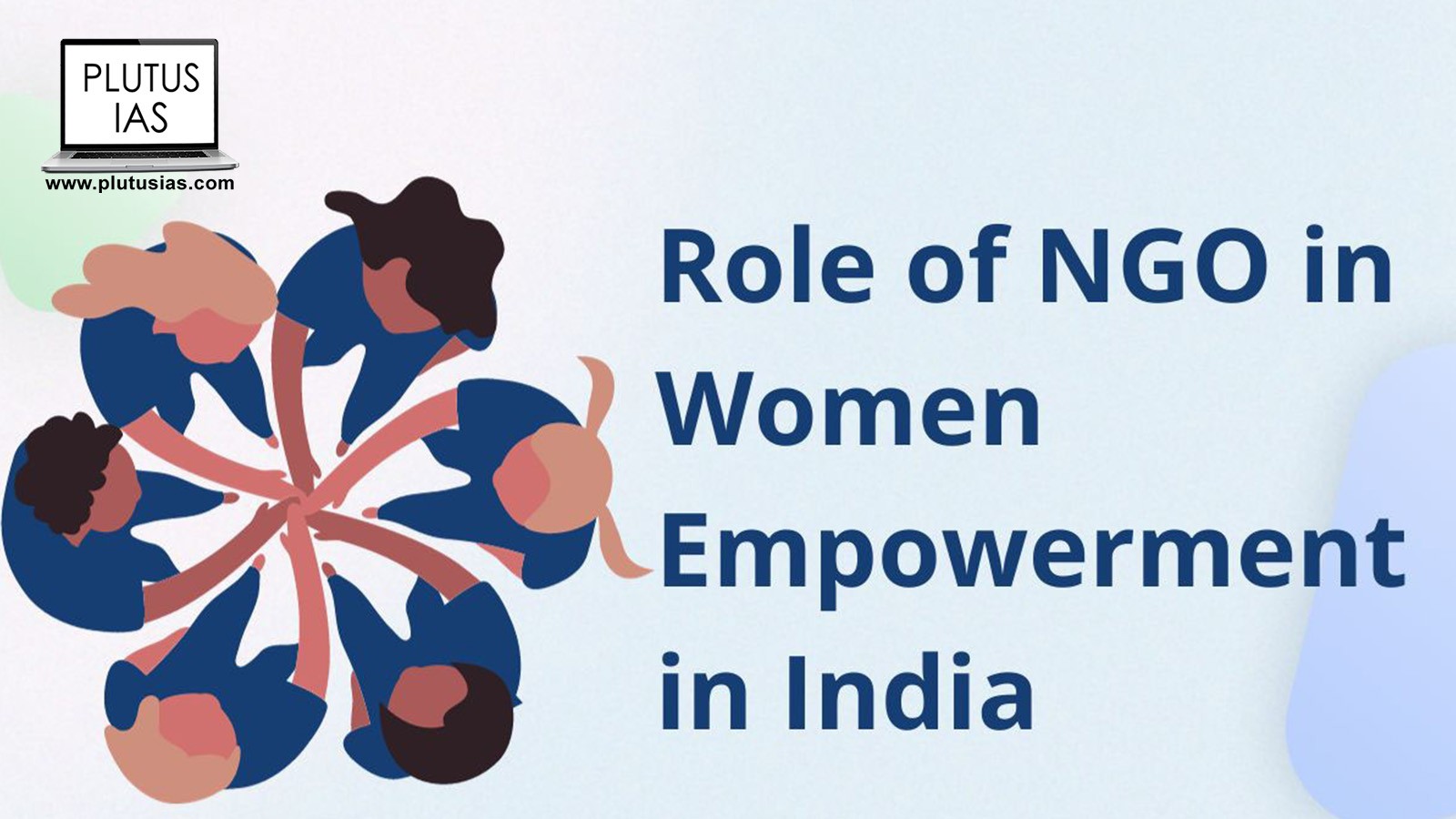
- Women empowerment and achieving gender equality is an important process to create a prosperous and equitable society. Its overall importance lies in social, economic, political, and cultural changes.
social justice :
Accepting gender equality increases the feeling of justice in the society. Women empowerment gives them proper status in the society and helps in reducing social inequality.
To play an important role in the progress of the nation:
The positive contribution of women plays an important role in the progress of the nation. If we want to include all members of the society, it is necessary to empower women.
Socio-cultural importance:
Gender equality and women empowerment lead to steps towards building a peaceful and equitable society. This reduces violence against women and maintains harmony in the society.
Economic importance:
Giving women equal rights and opportunities also improves economic prosperity. They are capable and contribute to their families and society, which also benefits the nation.
Political importance:
- Supporting women and promoting them into leadership roles helps in better decision making in the political process. A positive environment towards women is created in the society through women MPs and Mahita leaders.
- Gender equality and women empowerment lead to prosperity, harmony, and an empowered society against injustice.Thus, gender equality and women empowerment have social, economic, political, and cultural significance, which helps in establishing prosperity, harmony, and justice in the society.
The Indian Constitution has many provisions for gender equality and women empowerment. Some major provisions for gender equality and women empowerment are as follows –
- Fundamental Rights (Article 14): All citizens have the right to equality and protection under the common law, which also includes women.
- Fundamental Rights (Article 15):Under this right, the consequences for womenThere is a ban on discrimination, which prevents gender discrimination.
- Fundamental Rights (Article 16):Under this right, all citizens of India have the right to equality in government employment and jobs, due to which women have also been included.
- Fundamental Rights (Article 21):Under this right, direct citizens of IndiaThe right to security of life and personal liberty includes the right of women to live with decency and dignity.
- Directive Principles of State Policy (Article 39): Under the Directive Principles of State Policy, there is a provision of equal pay for equal work to every citizen of India, which also includes women.
- Directive Principles of State Policy (Article 42):Under this, there is a provision of maternity relief and leave for fair and humane conditions of work for women as citizens of India, thereby including women.
- Directive Principles of State Policy (Article 44): Under this, there is a provision of Uniform Civil Code, which gives equal rights to women in marriage, divorce, inheritance etc.
- Directive Principles of State Policy (Article 45):Under Article 45 mentioned in the Constitution of India, every citizen of India has the provision of early childhood care and education for their children, which also includes the girl child.
- Fundamental Duties (Article 51A): As a fundamental right granted to the citizens of India, every citizen has a fundamental duty to renounce practices derogatory to the dignity of women.
- Fundamental Duties (Article 51A): Under this, every parent/guardian in India has a fundamental duty to provide educational opportunities to their children.
- Nari Shakti Vandan Act (Women’s Reservation Act) 2023:Under Women’s Reservation Act 2023The provision includes one-third reserved seats for women in the Lok Sabha, Legislative Assembly and Delhi Assembly.
Through these provisions, the Indian Constitution has encouraged women empowerment and equality, thereby attempting to reduce gender discrimination in Indian society.
Provisions for gender equality and women empowerment in India:
There are many legal provisions for women empowerment and gender equality in India, which attempt to keep women safe in the society and provide protection to their rights as citizens of India –
Socio-cultural empowerment of women:
Indian Penal Code (IPC): : It takes cognizance of crimes against women including rape, sexual harassment, dowry deaths, and acid attacks and ensures strict action against them.Is.
Protection of Women from Domestic Violence Act, 2005:This Act allows victims of domestic violence to obtain protection orders and residence rights, which helps them stay safe.
Dowry Prohibition Act, 1961 : Under this, giving and taking dowry is prohibited and there is a provision for punishment for its violation.
Sati (Prevention) Commission Act, 1987:Under this, the practice of Sati has been declared a punishable offence, due to which this practice is prohibited.
Child Marriage Prohibition Act, 2006:Due to this, to prevent child marriage, the minimum marriage age for girls has been made 18 years.
Economic empowerment of women:
Minimum Wage Act, 1948:This Act determines the minimum wage for all workers, including women.
Equal Remuneration Act, 1976:This helps in achieving the goal of gender equality in the workplace, as it prohibits discrimination in wages and salaries on the basis of gender.
Maternity Benefit Act, 1961 : Through this Act, maternity leave and other benefits are provided to working women.
Sexual Harassment of Women at Workplace (Prevention, Prohibition and Redressal) Act, 2013: This has created a system to prevent and redress sexual harassment in workplaces which helps women feel safe and supported.
Political empowerment of women:
Representation of the People Act, 1950 :With this, women have been given the right to vote and contest elections equal to men.
Delimitation Commission Act, 2002 :Due to this, it has been ordered to consider the number of women voters while determining the constituencies, which increases the electoral capacity of women.
Government schemes for women empowerment and gender equality in India:
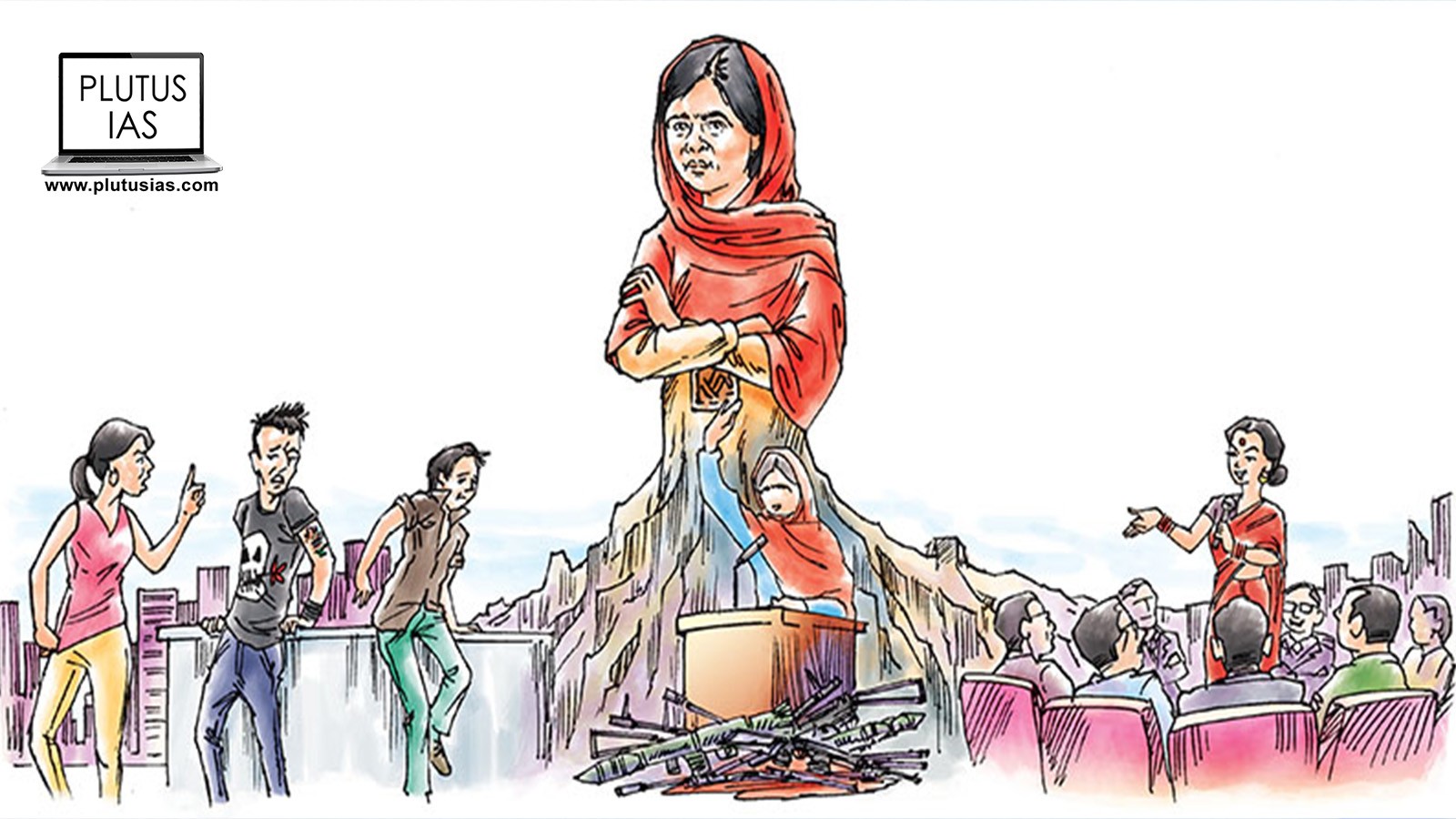
The Government of India has launched many schemes in the field of women empowerment and gender equality, which aim to make women active and independent in the society. The main goal of these schemes is to provide rights, education, health, and economic independence to women.
- National Women Empowerment Policy:The objective of this policy is to promote the overall development of women, including strengthening their education, health, and economic status.
- National Mission for Women Empowerment (NMEW):The mission provides support to women in various areas for empowerment, such as education, employment, and health.
- Gender Budget: This budget is implemented to promote gender equality between women and men, so that they get equal status in the society.
- BayT Bachao Beti Padhao Yojana (BBBP): The main objective of this scheme is to improve the population of daughters and make them educated.
- Pradhan Mantri Swasthya Suraksha Yojana (PMSSY):Through this scheme, women get quality health services, which improves their health condition.
- Stand Up India Scheme: Under this scheme, entrepreneurship is being promoted by providing loans to women from Scheduled Caste, Scheduled Tribe, and minority communities.
- Pradhan Mantri Jan Dhan Yojana (PMJDY): Through this scheme, basic banking services are being provided to women, which improves their economic condition.
- Women Leadership Development Programme: Under this programme, women are being trained in political roles so that they can play a greater role in the society.
Through these schemes, the government is trying to provide a positive environment for empowerment of Indian women in the society. These programs are helping women take steps towards prosperity and equality by involving them in various fields.
Challenges for women empowerment and gender equality:
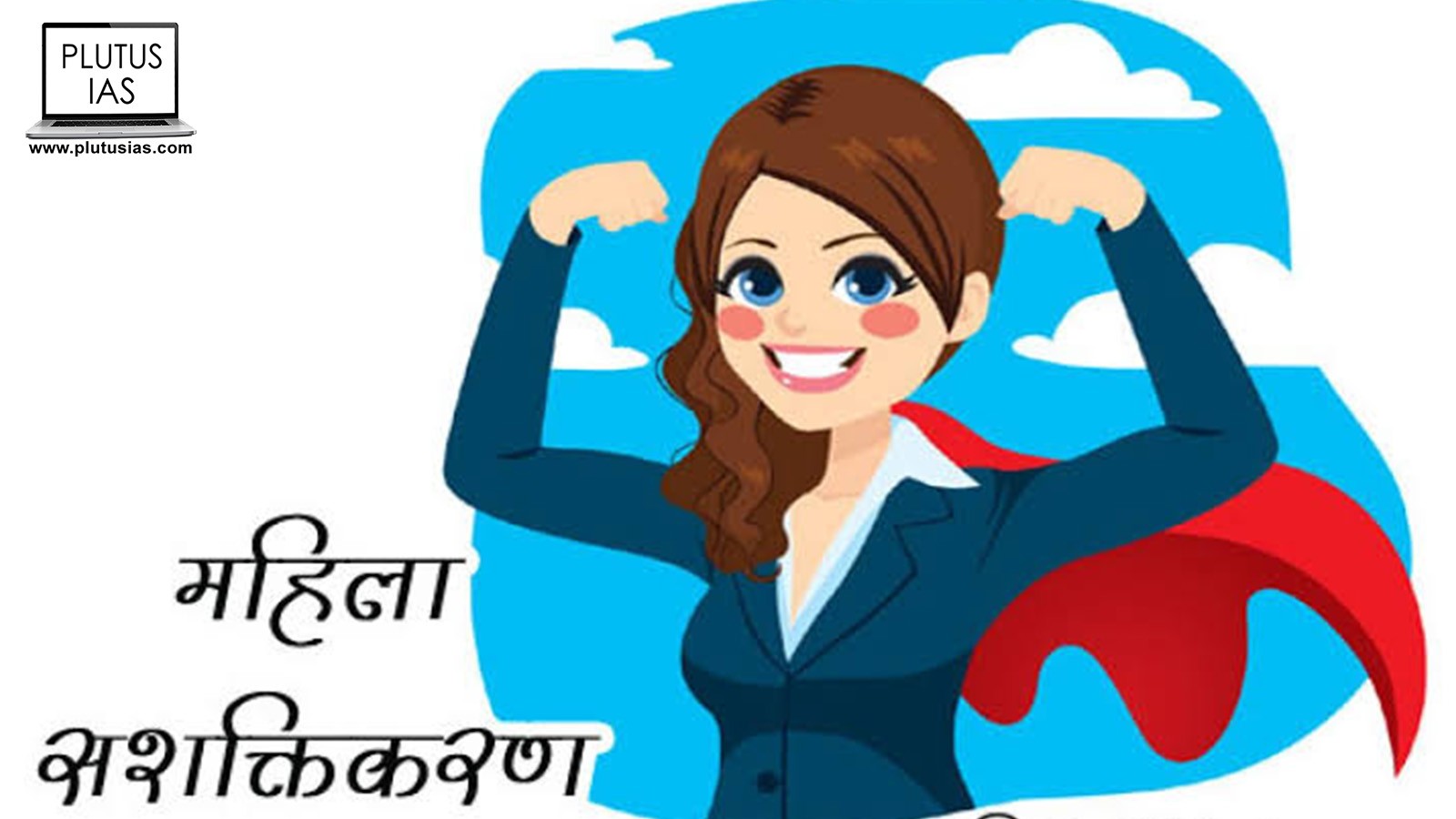
Despite the hard work done towards gender equality and women empowerment in India, there are many challenges that hinder this effort.
Social challenges facing women:
- Discriminatory Social Norms: Due to historical reasons, there is discrimination in democratic and cultural norms in India, due to which women move towards equal rights in the society.
- Stereotypical portrayal of women’s role:: The conservative thinking in Indian society has made women interested only in domestic work, due to which they are finding it difficult to progress in outside fields.
- Low literacy rate of women:: In many states and areas of India, the literacy rate of women is still very low, which is having a direct impact on their social and economic status.
Economic challenges facing women:
- Less employment opportunities:Women do not get many opportunities in the field of employment, and when they do, they are mostly placed in insecure and low-paying fields.
- Glass Ceiling: Women have difficulty reaching the top positions, known as the “glass ceiling”. This hinders them from reaching promotions and good positions.
- Economic inequalities: Most women in India are facing economic inequality, which is preventing them from becoming independent and capable.
Political challenges facing women:
- Low Political Representation: Women have very low political representation in India, which results in them having little voice in public decisions.
- ‘Mukhiya Pati’ or ‘Sarpanch Pati’ Culture: In most places in the rural areas of many states of India, women have only nominal political representation, and even this remains with their husbands or male relatives.
Other challenges facing women:
- Inadequate implementation of laws:
There should be official and positive implementation of laws in India so that women can properly utilize their rights.
- Challenges emerging as a result of globalization:
As a result of globalization and urbanization in India, women are also facing new challenges in which they need adequate protection and support. To meet these challenges, society must collectively cooperate and ensure women have access to higher education, more employment opportunities, and support.
Conclusion / Path to solution :

Following are some of the major measures suggested for women empowerment and gender equality in India –
Social empowerment of women:
- Change in social attitude:
To expand social awareness to change social attitudes and explain the importance of gender equality in society.
- Providing better educational opportunities to women
To provide higher education opportunities to women for equality in the society and to improve the quality of education to make them competent in various fields.
- Ensuring women’s safety:
Legal measures: Taking tough legal action for the safety of women and maintaining strong laws.
- Social change:Making people understand the importance of gender equality through social change and encouraging collective movements to support it.
Economic empowerment of women:
- skill development among womenTo provide necessary skills and training to women so that they can become competent in various economic sectors.
- Access to credit:To provide positive credit facilities to women to make them financially independent and enable them to participate in business.
Political empowerment of women:
- Promoting political participation:To encourage women to actively participate in political processes and promote them into leadership roles.
- Developing leadership among women: To train women through leadership development programs so that they can play leadership roles in the society.
- There is a need for collective efforts towards women empowerment and gender equality in India so that we can move towards prosperity and a harmonious, equal and cohesive society with all sections of the society.
- The Court’s opinion on the unconstitutionality of rules that exclude marriage and domestic partnership of women employees as grounds for ineligibility should be heeded by all organizations so that workplaces become enabling for women rather than hindering them.
- Women in India will have to break the barriers to education, employment and opportunities.




No Comments